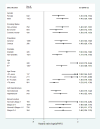Aortic pulse wave velocity improves cardiovascular event prediction: an individual participant meta-analysis of prospective observational data from 17,635 subjects
- PMID: 24239664
- PMCID: PMC4401072
- DOI: 10.1016/j.jacc.2013.09.063
Aortic pulse wave velocity improves cardiovascular event prediction: an individual participant meta-analysis of prospective observational data from 17,635 subjects
Abstract
Objectives: The goal of this study was to determine whether aortic pulse wave velocity (aPWV) improves prediction of cardiovascular disease (CVD) events beyond conventional risk factors.
Background: Several studies have shown that aPWV may be a useful risk factor for predicting CVD, but they have been underpowered to examine whether this is true for different subgroups.
Methods: We undertook a systematic review and obtained individual participant data from 16 studies. Study-specific associations of aPWV with CVD outcomes were determined using Cox proportional hazard models and random effect models to estimate pooled effects.
Results: Of 17,635 participants, a total of 1,785 (10%) had a CVD event. The pooled age- and sex-adjusted hazard ratios (HRs) per 1-SD change in loge aPWV were 1.35 (95% confidence interval [CI]: 1.22 to 1.50; p < 0.001) for coronary heart disease, 1.54 (95% CI: 1.34 to 1.78; p < 0.001) for stroke, and 1.45 (95% CI: 1.30 to 1.61; p < 0.001) for CVD. Associations stratified according to sex, diabetes, and hypertension were similar but decreased with age (1.89, 1.77, 1.36, and 1.23 for age ≤50, 51 to 60, 61 to 70, and >70 years, respectively; pinteraction <0.001). After adjusting for conventional risk factors, aPWV remained a predictor of coronary heart disease (HR: 1.23 [95% CI: 1.11 to 1.35]; p < 0.001), stroke (HR: 1.28 [95% CI: 1.16 to 1.42]; p < 0.001), and CVD events (HR: 1.30 [95% CI: 1.18 to 1.43]; p < 0.001). Reclassification indices showed that the addition of aPWV improved risk prediction (13% for 10-year CVD risk for intermediate risk) for some subgroups.
Conclusions: Consideration of aPWV improves model fit and reclassifies risk for future CVD events in models that include standard risk factors. aPWV may enable better identification of high-risk populations that might benefit from more aggressive CVD risk factor management.
Keywords: cardiovascular disease; meta-analysis; prognostic factor; pulse wave velocity.
Copyright © 2014 American College of Cardiology Foundation. Published by Elsevier Inc. All rights reserved.
Figures




Comment in
-
Aortic stiffness for cardiovascular risk prediction: just measure it, just do it!J Am Coll Cardiol. 2014 Feb 25;63(7):647-649. doi: 10.1016/j.jacc.2013.10.040. Epub 2013 Nov 13. J Am Coll Cardiol. 2014. PMID: 24239659 No abstract available.
References
-
- Wang TJ, Gona P, Larson MG, et al. Multiple biomarkers for the prediction of first major cardiovascular events and death. New England Journal of Medicine. 2006;355(25):2631–2639. - PubMed
-
- Danesh J, Wheeler JG, Hirschfield GM, et al. C-reactive protein and other circulating markers of inflammation in the prediction of coronary heart disease. N Engl J Med. 2004 Apr 1;350(14):1387–1397. - PubMed
-
- Blacher J, Guerin AP, Pannier B, Marchais SJ, Safar M, London G. Impact of aortic stiffness on survival in end-stage renal disease. Circulation. 1999;99:2434–2439. - PubMed
Publication types
MeSH terms
Grants and funding
- N01 AG062101/AG/NIA NIH HHS/United States
- N01 HC025195/HC/NHLBI NIH HHS/United States
- R01 HL076784/HL/NHLBI NIH HHS/United States
- R01 HL060040/HL/NHLBI NIH HHS/United States
- FS/12/8/29377/BHF_/British Heart Foundation/United Kingdom
- R01 HL080124/HL/NHLBI NIH HHS/United States
- R01 AG028321/AG/NIA NIH HHS/United States
- R01 HL070100/HL/NHLBI NIH HHS/United States
- P30 AG024827/AG/NIA NIH HHS/United States
- R01 HL071039/HL/NHLBI NIH HHS/United States
- K24 HL004334/HL/NHLBI NIH HHS/United States
- R01 HL077447/HL/NHLBI NIH HHS/United States
LinkOut - more resources
Full Text Sources
Other Literature Sources
Medical

